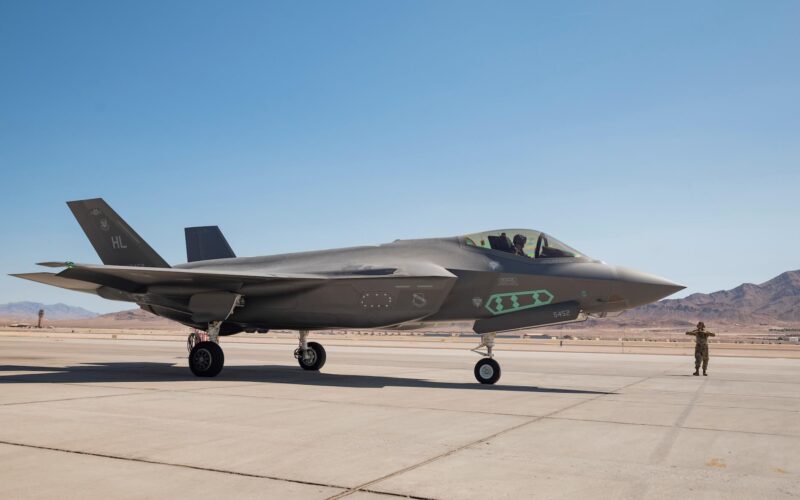The United States Air Force (USAF) conducted tests with two F-35A Lightning II fighter jets that dropped B61-12 Joint Test Assemblies (JTAs) during a complete weapon system demonstration for the nuclear design certification.
The fifth-generation fighter jets took off from the Nellis Air Force Base (LSV) near Las Vegas and flew northwest towards the Tonopah test range, where they released two B61-12 JTAs from operationally practical flight envelopes.
“The B61 series weapons are tactical gravity nuclear weapons that can be used on Dual Capable Aircraft like the F-15E and F-16C/D,” said Lieutenant Colonel Daniel Jackson, division chief, headquarters ACC strategic deterrence and nuclear integration.
The nuclear certification process to certify the fighter jet’s nuclear carriage capability includes nuclear design certification and operational certification.
The USAF conducted the preliminary flight test on October 4, 2021, concluding the on-aircraft testing for the initial nuclear certification effort. The data collected from the test is currently under evaluation by the United States Department of Defense and the Department of Energy.
“Having a 5th Generation DCA fighter aircraft with this capability brings an entirely new strategic-level capability that strengthens our nation’s nuclear deterrence mission,” added Jackson.
The air combat command portion of the nuclear design certification process with the F-35A fighter jet was led by the 422nd and 59th test and evaluation squadrons. At the same time, the 926th aircraft maintenance squadron led the maintenance efforts for the process.
“Adding ‘nuclear capable’ to a 5th-Gen fighter that already brings several conventional-level capabilities to the table adds strategic-level implication to this jet,” stated Jackson.
The tentative date and timeline for the F-35A operational nuclear certification are unknown, but the test would play a critical role in the complete nuclear certification process for the fighter aircraft.
The B61-12 nuclear gravity bomb is the latest variant of the B61, which was introduced in the 1960s. It is not only critical for the United States nuclear deterrence as the main component of its nuclear arsenal, but also to some of its allies which are part of the NATO Nuclear Sharing agreement. A number of B61 are currently stored in several bases in Europe, namely in Belgium, Germany, Italy, Netherlands, and Turkey. Coincidentally, all but Germany and Turkey are to operate the F-35A Lightning II.
On October 5, 2021, the US State Department reported that the US military maintained a stockpile of 3,750 active and inactive nuclear warheads, down by 55 compared to 2019 and by 72 in 2017.

